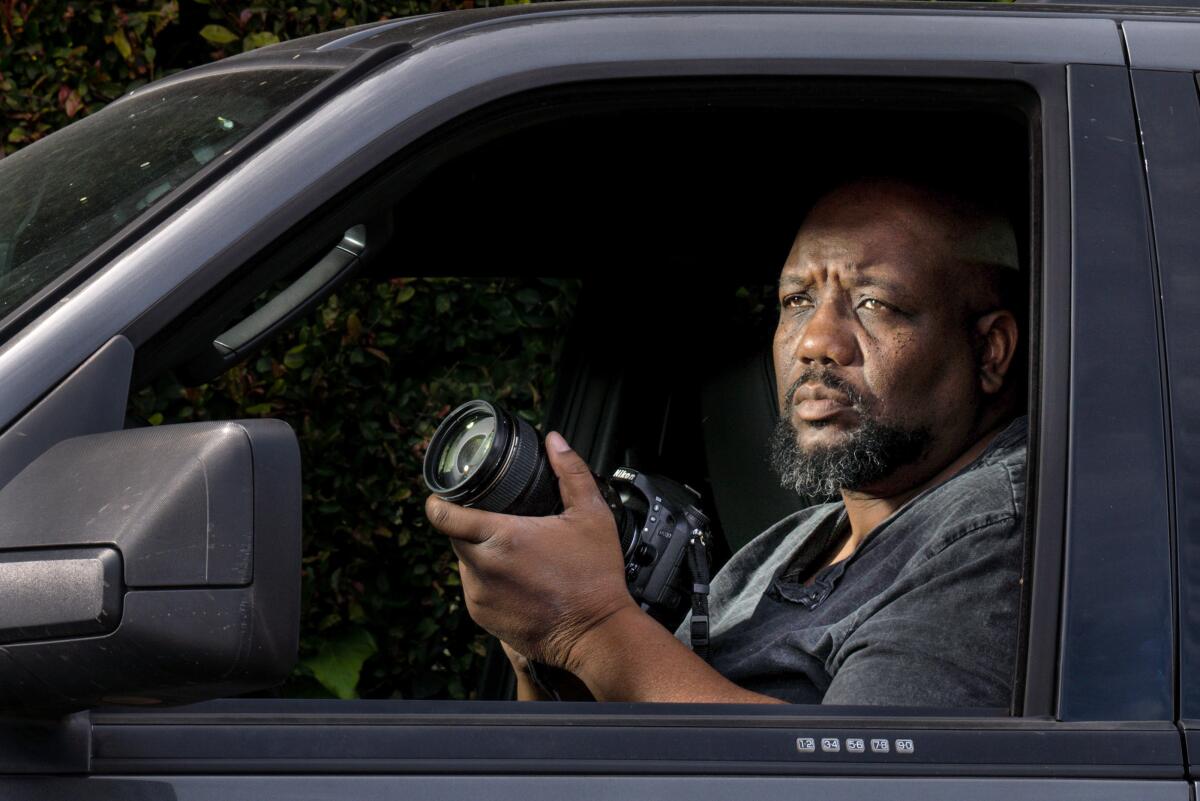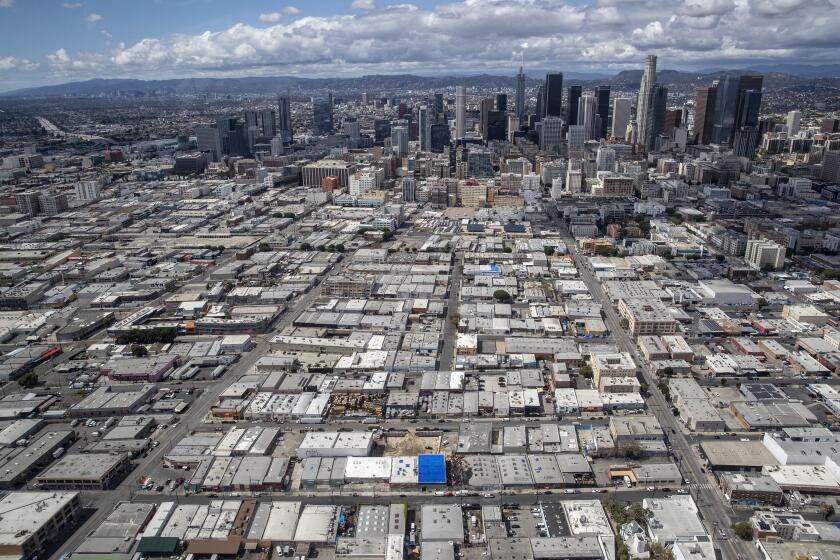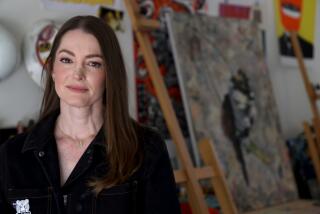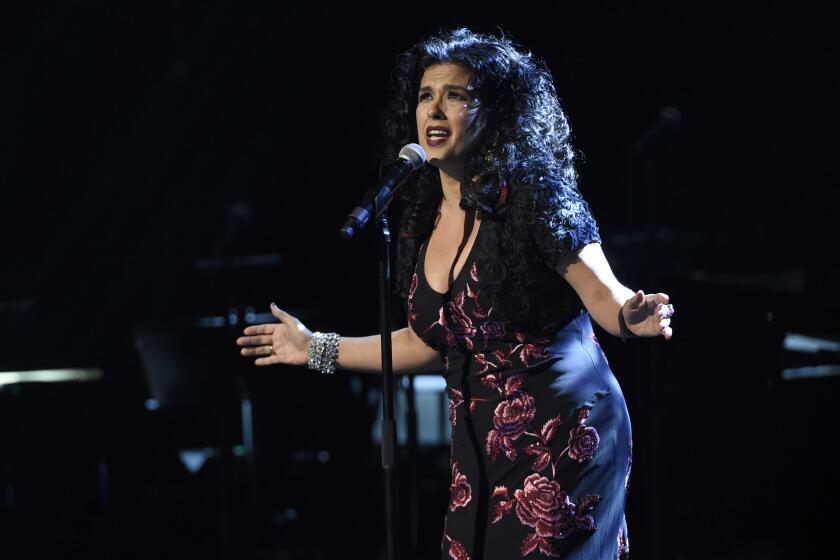As celebs shelter at home, paparazzi hustle to find new angles

- Share via
In his more than two decades working as a paparazzi photographer, Giles Harrison has gone to some wild extremes to get the shots he wanted. He was once chased across the Gulf of Mexico by law enforcement personnel in gunboats while trying to photograph Brad Pitt and Jennifer Aniston on vacation. He hung outside a helicopter to snap aerial photos of the 1997 wedding of Andre Agassi and Brooke Shields.
Still, nothing prepared him for the unprecedented challenge of working as a paparazzo in the middle of a global pandemic. “I don’t think anybody saw this coming,” Harrison, 51, said last week.
Amid the misery and economic devastation wrought by the coronavirus outbreak, the fate of those who make their living snapping candid photos of Hollywood’s rich and famous — routinely invading their personal privacy and at times even putting lives at risk — may not rank high among the general public’s concerns. But for Harrison and the hundreds of other paparazzi currently working in Los Angeles and other celebrity-dense cities like New York, Miami and London, the pandemic has brought their work to a virtual grinding halt.
With the majority of the nation under lockdown, celebrities, like the rest of us, are stuck in their homes. The beaches where they might otherwise be spotted sunbathing are empty. The cafes, restaurants and nightclubs they normally frequent are closed. The film and TV sets where they work are shut down. The gyms and yoga studios where they exercise are shuttered. The red carpets they strut during film premieres have been rolled up and stowed away indefinitely.
With their usual hunting grounds all but barren, and with stars Instagramming their own quarantines, paparazzi have been left struggling to capture what few glimpses they can. For Harrison, that means spending all day driving around Los Angeles’ Westside communities — through Pacific Palisades, Brentwood and Santa Monica and on to the San Fernando Valley, West Hollywood and Beverly Hills — looking for any bold-faced name who might be out getting some fresh air or heading to the store to stock up on toilet paper and food.
“The only thing that we’ve seen people doing lately is exercising, walking around their neighborhoods, going grocery shopping,” said Harrison. “I saw Liev Schreiber and his girlfriend [Taylor Neisen] walking their dog on Saturday in Venice. Jordana Brewster from the ‘Fast and Furious’ movies, she was out taking a walk yesterday. I saw Don Cheadle on a power walk with hand weights. I saw Christian Bale riding a Razr scooter with his wife and kids in Brentwood.”
In the complex and fiercely competitive paparazzi ecosystem, photographers can spend years working to cultivate different patches of turf: red carpets, nightclubs, the LAX arrivals area. In a matter of days, the pandemic threw all of that out the window. Now many find themselves cruising the same neighborhoods and grocery stores across Los Angeles, hoping for a single exclusive shot, or fruitlessly sitting for days outside of celebrities’ homes — “doorstepping,” in the parlance of the trade.
“Me personally, I was a set paparazzi, where I would work on productions,” said one 44-year-old photographer who goes by the alias Mark Karloff. “On any given day there’s normally upwards of 30-plus productions shooting around town, and 90 percent of the time I’d just be on one of those. When those started shutting down, that put me back out on the streets like when I first started this job, camping out in front of celebrities’ homes and just basically driving around celebrity-rich areas ... It seems like the only cars out on these roads right now are either construction, delivery trucks or us.”
From Neil Diamond’s updated “Sweet Caroline” to spoofs of “Kokomo” and “Stayin’ Alive,” here are the best song parodies to keep you company in quarantine.
In recent days, Karloff says, he’s been lucky enough to capture photos of Jennifer Garner and Kate Hudson out on walks. But given the dearth of material, celebrity blogs and news sites will now pay modest sums for shots of figures with even a small measure of fame. “There are celebrities that are selling right now that never would have sold three weeks ago,” Karloff says. “Basically anybody out and about — especially if they have a mask on and gloves — is a guaranteed sale.”
But making a sale and making a living are not the same thing. Since the heyday (some would say the nadir) of the paparazzi business in the late 1990s and early 2000s, when exclusive photos of celebrities being “just like us” routinely fetched $5,000 to $15,000 or more, the industry has been steadily eroding, undermined by the slow demise of glossy print publications, legal pushback against particularly aggressive paparazzi behavior and the ability of stars to share their own personal pictures and videos on social media.
While it’s impossible to peg the exact number of paparazzi, most of whom work on a gig basis, Karloff estimates that in the glory days there were 500 full-time celebrity photographers in L.A. Now, at most, there are half that number. Meanwhile, the market for their photos has shrunk to a handful of sites including TMZ, Just Jared and the U.K.’s Daily Mail, which rarely pay the sort of fees that, say, People magazine would in years past.
The pandemic has shifted the power even further away from individual photographers. “A lot of the guys who work regularly for specific photo agencies will work on retainers or guarantees: Say, ‘I’ll give you $2,000 a month and hopefully you’re going to generate $5,000 a month in material,’ ” said Harrison. “Now, since the material isn’t coming in, a lot of those agencies are pulling those guarantees and making people go freelance because it’s not sustainable.” (The Times reached out to four photo agencies that specialize in celebrity photography but none responded.)
For paparazzi like Karloff — who cohosts “The Paparazzi Podcast” with another photographer who calls himself Jedi — the pandemic has made an already challenging financial situation increasingly untenable. Many worry that, as the virus continues to spread and the death toll mounts, fans will quickly tire of endless shots of celebrities in masks walking their dogs or loading groceries into the car at their local Erewhon market. (The oddly slow daily walks of Shawn Mendes and Camila Cabello near their home in Miami have become the subject of viral fascination in recent days, but it’s unclear how long such mundane moves will remain of interest.)
“The money was not good to begin with, and now it’s really hard to make any kind of money doing this,” says Karloff, who has two children, ages 12 and 8, and has been freelancing for roughly the past year and a half since the photo agency he’d been with for his entire career went under. “My wife has lost her job so it’s really a mad chase to get out here and get people.”
On a recent episode of “The Paparazzi Podcast,” Jedi spoke about the anxiety and monotony of the gig now. “It’s just tough leaving the house every day knowing the odds are against you,” he said. “Whereas before if you sat at a celeb’s house for four or five days, you’re going to get them a couple of times, now you could sit there for two weeks and some of these people aren’t leaving. ... It’s tough. It’s really ... tough.”
To weather the dry spell, some paparazzi are looking to leverage other sources of income. As news about the pandemic grew increasingly grim, longtime photographer Rick Mendoza decided to leave Los Angeles last month and temporarily relocate to Palm Springs, where he has tried to piece together paid work.
“I’m a stringer and a nightcrawler; I have scanners in my car so when there’s an accident or a fire, I go after that,” Mendoza said. “Anything where I can use my camera or my video camera, I’m going to do it, because that’s how you sustain yourself until it gets back to whatever we consider normal.
Wealthy areas saw an early surge in coronavirus cases in L.A. County. More accessible testing and international travel provide a likely explanation.
“We have to shoot everything because it all adds up,” he explained. “Unless you get a decent hit, an exclusive that Daily Mail or TMZ picks up at $300 or $400 ... you’ve just got to accumulate 50 bucks here, 100 bucks here, 10 bucks here. ... A lot of these guys, all they knew was paparazzi, paparazzi, paparazzi. They weren’t thinking ahead of the game. But this market is changing and if that’s all you have, you’re done.”
At the same time, Mendoza is trying to work the Palm Springs star quarantine scene. “There’s celebrities here also — don’t let those boys know that,” he said, referencing his L.A. peers. “There’s old-school Hollywood here. I get myself a picture of Suzanne Somers out here, I’m going to make big money on TMZ, you know? That’s how I think.”
With the pandemic threatening to upend life for months to come, Harrison is not sure how much longer many of his fellow paparazzi will be able to hold on. “I truly don’t think it’s long,” he said. “People who have been in this business long enough to make a career of it, luckily like I have, might have other sources of income and savings and investments. But a lot of photographers don’t. I’ve just seen one guy I know who’s a photographer, a Vietnam vet who gets paid under the table by a photo agency to shoot celebrities, and he’s literally standing outside Whole Foods as we speak, panhandling.”
Still, as difficult as the current situation may be, Harrison finds one small, ironic consolation in it. “Weirdly, there’s no job that lends itself to social distancing better,” he said. “If you do it well, you’re isolated. You’re in a car. You’ve got long lenses so you can keep your distance from people. I can be 500 feet away. Especially in this situation, you don’t want celebrities to feel like you’re putting them at risk to make a buck.”
Paparazzi know that no federal bailout package is coming to rescue their industry. They’re used to being seen as parasites on the hide of celebrity. But amid this wrenching crisis, some are hoping that people — even the ones whose personal lives they exploit for profit — can at least see them as fellow human beings who are suffering along with everyone else.
“The celebrities are never empathetic to us at all — they think of us as all basically the same guy — but yesterday I took a different approach,” Karloff said. “I drove by Chris Pratt’s house and he was in his driveway sweeping and I just decided to stop and say hello. I said, ‘Hey, I know you’ve seen me around here once in a while. I apologize because there’s a lot of photographers out running around right now, but a lot of us are in kind of a dire situation and all we can do is get pictures of you guys to get our families fed. When you see me, I don’t want you to feel threatened. I’m a nice guy. I just wanted to introduce myself.’”
Pratt, who has been hounded by paparazzi ever since breaking out to mega-stardom in the 2014 smash “Guardians of the Galaxy,” seemed receptive to the overture, Karloff says.
“He said, ‘Thank you, I appreciate that. Take care, buddy.’ I don’t know if that’s ever going to help. But maybe if I see him later in the week or on another day, maybe he remembers and gives me a wave or a smile.”
More to Read
The biggest entertainment stories
Get our big stories about Hollywood, film, television, music, arts, culture and more right in your inbox as soon as they publish.
You may occasionally receive promotional content from the Los Angeles Times.













